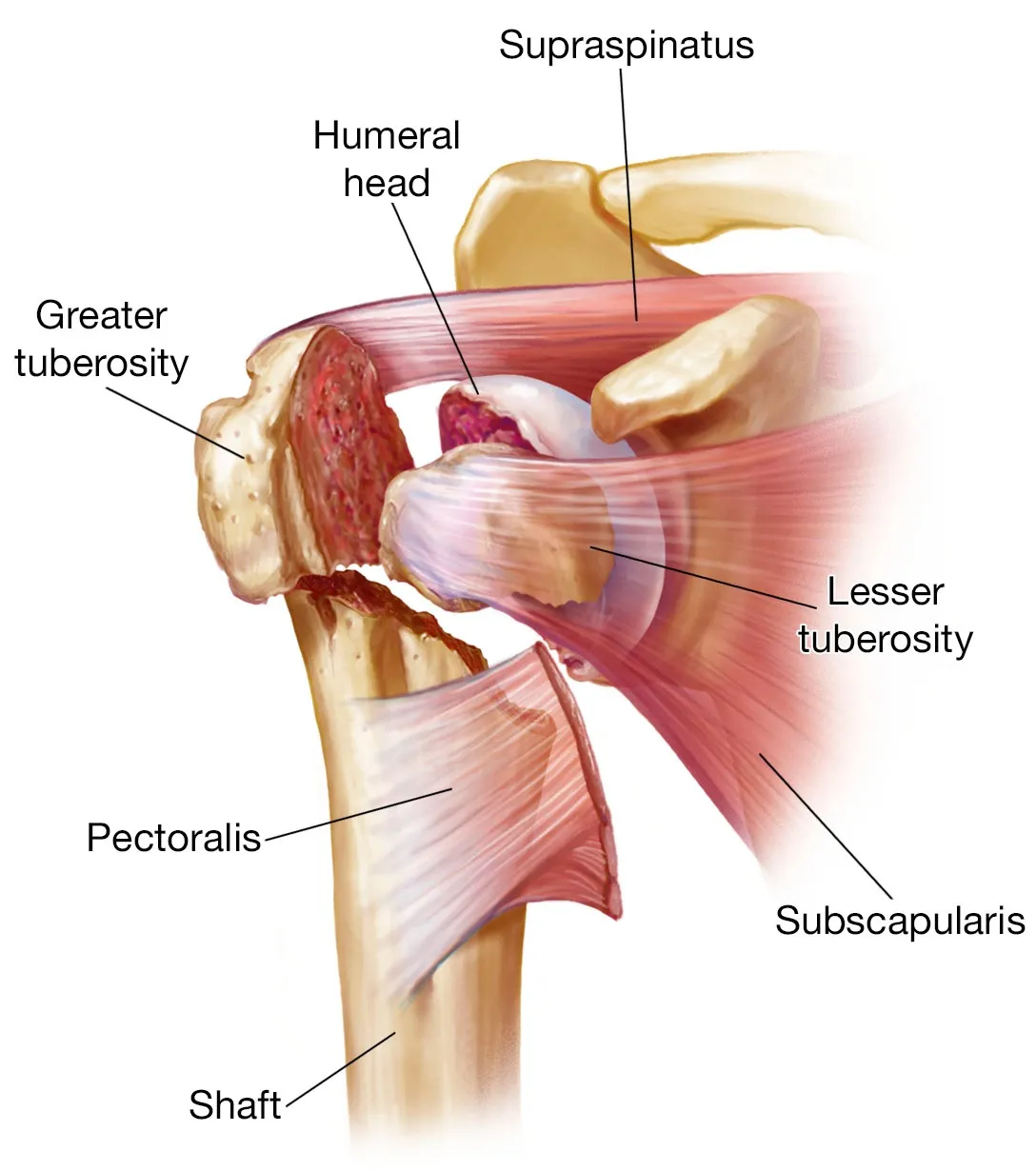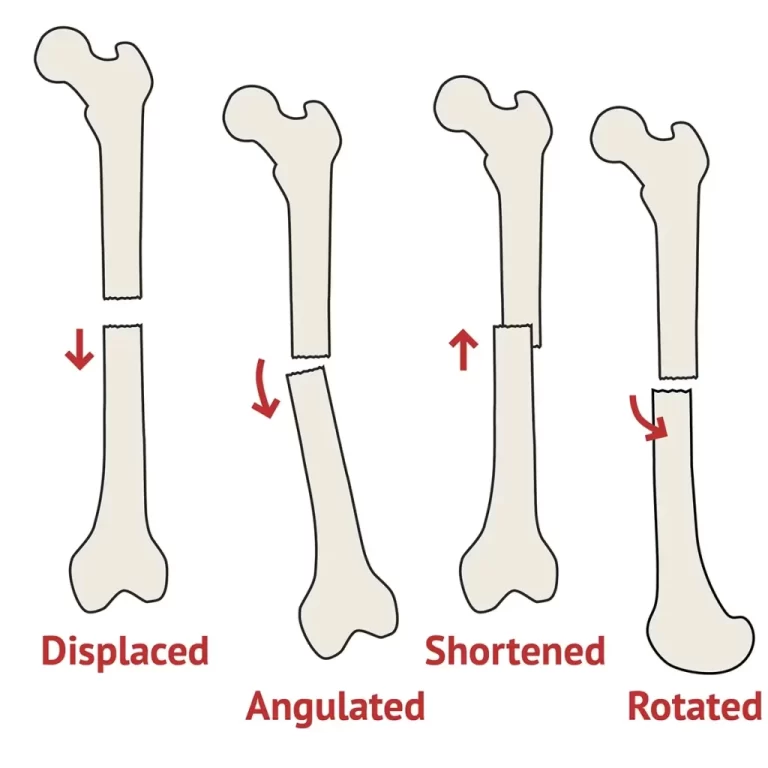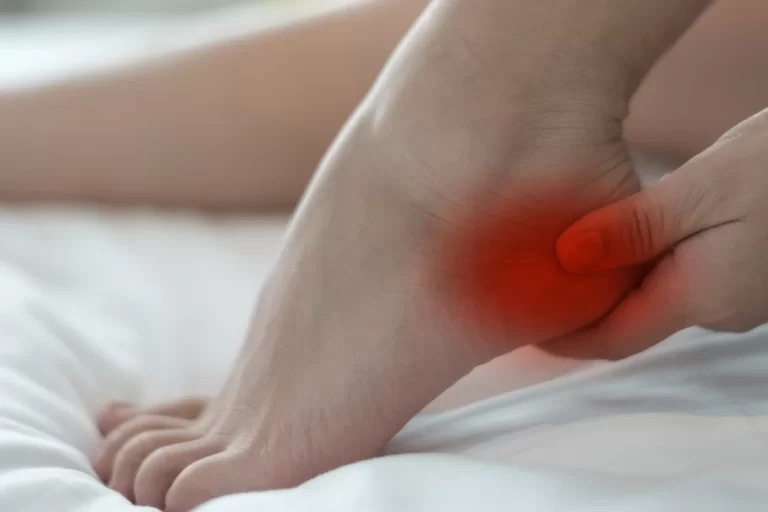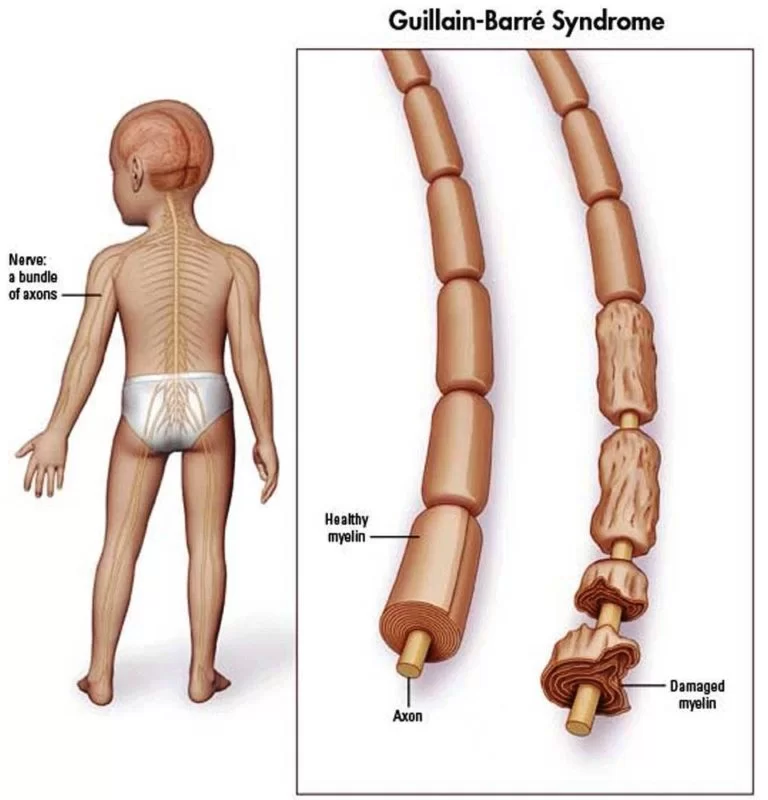Bone Fracture in Shoulder
Introduction
A fractured bone in your shoulder joint is called a shoulder fracture. A shattered bone is known medically as a bone fracture.
Shoulder trauma is not uncommon. A high-speed motor vehicle collision can result in fractures of the collarbone (clavicle) or shoulder blade (scapula), as well as split shoulders from falls onto the shoulder.
Anatomy
here are three bones in the shoulder:
- The shoulder blade, or scapula
- The collar bone, or clavicle
- The arm bone, or humerus
- Soft tissues such as muscles, tendons, ligaments, and joint capsules connect these bones to create a platform on which the arm can function.
- Three joints make up the shoulder:
- The joint (glenohumeral)
- The joint acromioclavicular
- Joint sternoclavicular
- The link between the scapula, or shoulder blade, and the chest wall is another articulation, or point where the shoulder meets with another component in the body.
- The main joint in the shoulder is the glenohumeral joint. The glenoid of the scapula, a golf-tee-shaped joint, is joined by a ball (the humeral head).
- Soft tissues envelop the shoulder’s bones in multiple layers.
- The deltoid muscle, located just beneath the skin and gives the shoulder its rounded shape, is the upper layer. To raise the arm overhead, the deltoid muscle is used.
- The sub-deltoid bursa is a fluid-filled sac directly beneath the deltoid muscle. It resembles a water balloon.
- Deeper yet, the layer below the subdeltoid bursa the layer below the subdeltoid bursa.
What are the types of shoulder fractures?
The shoulder joint is made up of 3 bones:
- the upper arm bone, or proximal portion, of your humerus.
- Your shoulder blade, or scapula.
- Your collarbone is your clavicle.
- Shoulder fracture occurs when any one of these bones is broken.
- When the bones on opposing sides of a joint are not aligned, a dislocation occurs. Dislocations may affect any one of the three joints.
- An “acromioclavicular dislocation,” or dislocation of the collar bone joint, is referred to as a “separated shoulder.”
- The clavicle and the breastbone (sternum) are no longer connected when the sternoclavicular joint dislocates.
- Dislocations of the glenohumeral joint, or the ball and socket joint of the shoulder, can occur anteriorly or posteriorly.
- Tears in the ligaments, tendons, muscles, and joint capsule of the shoulder, including rotator cuff and labral tears, are referred to as soft-tissue injuries.
Displaced shoulder fracture vs. non-displaced fracture
- A displaced fracture occurs when the fragments of your bone shift around the break so much that a gap opens up around it.
- Even though the fragments were not dislocated enough during the break to be out of alignment, non-displaced fractures are nonetheless shattered bones.
Closure versus open shoulder fractures
- Your healthcare provider will determine whether the fracture is closed or open. When a fracture is open, the skin is broken by the damaged bone.
- Open fractures are sometimes known as complex fractures. The risk of infections and other consequences is higher in open fractures. Although your bone does not pierce through your skin, closed fractures are nevertheless quite dangerous.
Symptoms and Causes
Shoulder fractures: what causes them?
- Almost always, injuries that strike your shoulder suddenly and violently result in shoulder fractures. Among the most typical causes are:
injuries sustained in sports.
Direct strikes to the region from falls, collisions, or car crashes can result in fractures of the proximal humerus or clavicle.
The scapula is not easily shattered since it is shielded by the surrounding muscles and the chest. Therefore, high-energy trauma, such as a high-speed car crash, is typically the cause of scapula fractures. Chest injuries frequently happen concurrently (at the same time) with scapula fractures. - Dislocation of the Shoulders
When the arm is above the level of the shoulder, it can be violently twisted outward, or externally rotated, resulting in anterior (toward the front) dislocations of the shoulder. Numerous events, such as falls or direct blows to the shoulder, can result in these injuries.
Shoulder dislocations that occur posteriorly, or towards the back, are far less prevalent than those that occur anteriorly. When convulsions or electric shocks cause the muscles at the front of the shoulder to tense and tighten violently, it can result in posterior dislocations.
Distinctiveness of the Shoulders
- Acromioclavicular dislocations can result from lifting heavy things or from falls onto the shoulder. It’s a little inaccurate to refer to this problem as “shoulder separation” because the affected joint is not a true joint.
The particular type of fracture determines the symptoms. This is especially true for shoulder fractures. - Overall Symptoms
Pain Bruising and swelling
unable to move the shoulder
a grating (crepitus) feeling when moving the shoulder
“It does not look right” is a deformity.
Particular Signs: Fractures of the Clavicles
- bruises and swelling in the vicinity of the collarbone middle
- a possible bumpy region that is the conspicuous (bulging) ends of the fracture under the skin; a restricted range of motion in the shoulder, though not as much as in proximal humerus fractures
Particular Signs: Fracture of the Proximal Humerus
- An extremely enlarged shoulder
- extremely little shoulder mobility
- extreme agony
- bruising encircling the upper arm
- a lump or protrusion near the front of the shoulder
- Inability to move the arm
- An arm rotated outward
- The sensation of a “dead arm”
What are the risk factors for shoulder fractures?
- Shoulder fractures can happen to anyone, but they are more common in traumatized children and teens and in elderly persons who fall.
- Bone fractures are far more common in people with osteoporosis or osteopenia, especially from falls. Because osteoporosis weakens bones, fractures that occur suddenly and unexpectedly are more likely to occur. Many people don’t become aware that they have osteoporosis until after it breaks a bone. Usually, there aren’t any overt signs.
What side effects might shoulder fractures cause?
- Many people suffer from fractured shoulders even after the injury heals and have chronic stiffness in the joint. Your chance of getting arthritis in that shoulder can also rise if you have a fractured shoulder.
- You are more likely to get bone infections (osteomyelitis) if you have an open fracture, in which the bone breaks through the skin.
- Although it’s uncommon, there’s a risk that the same injury that resulted in a fracture could also have injured other shoulder structures, such as your:
- muscles.
- ties.
- tendon.
- Nerves.
- vascular structures.
Diagnoses and Examinations
How are fractures of the shoulder diagnosed?
- A medical professional will use imaging studies and a physical examination to diagnose a shoulder condition. If you are brought to the emergency department (ER) following a trauma such as a car accident, the doctors there may identify the fracture.
- By what means do medical professionals diagnose shoulder fractures?
- To take images of the fracture, you’ll need to do at least one of the following imaging tests:
- X-rays: An X-ray of your shoulder will reveal the extent of your bone damage and confirm any fractures.
- Magnetic resonance imaging (MRI): To obtain a comprehensive image of the damage to your bones and the surrounding tissue, your physician may utilize an MRI. Your bones’ surrounding cartilage and ligaments will also be visible on an MRI.
- The computed tomography (CT) scan: Compared to an X-ray, a CT scan will offer your doctor or surgeon a more detailed image of your bones and the surrounding tissue.
Treatment
How are fractures in the shoulder treated?
- Depending on whether the bone is shattered and whether you have any other ailments, your doctor will treat your fractured shoulder differently.
- fractures of the clavicles
- Surgery has not typically been used to treat clavicle fractures.
- When the bone is noticeably misaligned or the fracture has penetrated the skin, surgery becomes necessary. More recently, there has been some data supporting the potential benefits of surgical treatment for specific forms of clavicle fractures.
- During surgery, the fracture is usually fixed using plates, screws, or rods inserted into the bone. Take time to discuss with your surgeon the pros and cons of this procedure.
Fracture of the Proximal Humerus
- If the bone pieces in a proximal humerus fracture are not substantially malpositioned, most cases can be managed without surgery. If surgery is required, the procedures typically include: Placing plates, screws, or pins to fix the fracture fragments; or
- Replacement of the shoulders
- Breaks in the Scapula
- Most scapula fractures can be managed without surgery. Painkillers, ice, and immobilization with a sling or shoulder immobilizer are all part of the treatment. We’ll check the patient for any more injuries.
- Surgery may be the best course of action for scapula fractures in rare instances. These typically involve the following situations: Shoulder (ball and socket) joint fracture fragments; or
- An extra serious clavicle fracture exists.
- During surgery, the bones are realigned and the fracture fragments are fixed with plates and screws.
Apsectorial Separations in the Shoulders
- The degree of the injury, the separation’s direction, and the patient’s physical needs all play a role in how a shoulder separation is treated. without having surgery.
Surgery is frequently necessary for severe upward separations or downward or backward dislocations. Ligament reconstruction or repair is done during surgery.
Surgery is a common treatment for manual laborers and professional sportsmen, although the outcome can vary depending on the particular injury and the demands placed on the patient’s activities following the procedure. - Less severe shoulder separations are typically addressed.
Glenohumeral joint dislocations in the shoulders
“Putting it back in the socket” or lessening the dislocation is the first step in treating a shoulder dislocation. Usually, this entails receiving care in the emergency department.
Via an intravenous (IV) line, the patient receives mild sedation and pain medication. The doctor will frequently adjust the shoulder by moving it. After an X-ray confirms the realignment, the shoulder is wrapped in a sling or customized brace.
Later on, additional treatment is administered based on:
The age of the patient
Evidence of chronic, persistent issues with the shoulder misaligning
The underlying soft-tissue injury (to the capsulolabral complex or the rotator cuff)
Patients under the age of twenty-five usually necessitate surgery. Surgery is typically necessary for persistent shoulder dislocations or instability. During surgery, the injured soft tissues are repaired.
Immobilization
- You might only require a sling or brace if the fracture is minor and your bones have not moved much out of place (a non-displaced fracture). Your requirement to wear one for a certain amount of time will depend on the nature and cause of your fracture. You will require more X-rays to confirm that your bones are healing properly.
- For the majority of clavicle and scapula fractures, recovery of shoulder mobility merely requires immobilization and physical therapy.
Surgery for a fractured shoulder
- Surgery is necessary for some shoulder fractures. If the fracture caused injury to the glenoid, the socket in your scapula that keeps your humerus in place, you may require surgery.
- Among the most common operations for shoulder fractures are:
- Internal fixation and open reduction
- Your surgeon is going to realign your bones to their proper position, after which you should fasten them firmly to let them mend and regrow together. The procedure they typically do is known as an internal fixation, in which your surgeon uses metal plates, screws, or pins to hold your bone in place while it heals.
Arthroplasty
- A procedure called an arthroplasty replaces a joint. Should your shoulder joint be seriously damaged due to the fracture, you might require shoulder replacement surgery. The injured joint will be removed by your surgeon and replaced with a prosthetic joint.
Complications
Surgery for a fractured shoulder Although uncommon, issues can include:
- ACS, or acute compartment syndrome: Your muscles may get so compressed that blood cannot reach the tissue, leading to irreversible damage to your muscles and nerves.
- Malunion: This is the misalignment of your damaged bones throughout the healing process.
- Nonunion: It’s possible that your bones won’t reassemble completely or at all.
Prevention
- To lower your chance of getting hurt, heed this general safety advice
- Wear your seatbelt at all times.
- Wear the appropriate safety gear when participating in all sports and activities.
- Ensure that nothing could trip you or others in your house or business.
- It is important to always utilize the proper tools or equipment when reaching for anything at home. Avoid standing on chairs, tables, or worktops.
- Adhere to a diet and exercise regimen that will support the health of your bones.
- If you have a family history of osteoporosis or are older than 65, discuss getting a bone density test with your healthcare provider.
- If you have trouble walking or are more likely to fall, use a cane or walker.
Physiotherapy Treatment and Rehabilitation
Rehabilitation For Shoulder Fracture
- Treatment for shoulder fractures can take many different forms, but to fully recover movement and help the patient resume their regular activities, rehabilitation is always required following the initial course of treatment.
- Following the first treatment for the fracture, a physical therapy routine is put into place to strengthen the shoulder and improve mobility. Inadequate rehabilitation can lead to consequences like weakness, inflammation, and chronic discomfort that make it harder to move the arm and shoulder and carry out everyday tasks.
Rehabilitation Without Surgery for Shoulder Fractures
- For four to six weeks following a fracture, the injured shoulder must be immobilized using a sling or shoulder immobilizer. If the injury was not serious, recovery happens rather quickly, and function can return four weeks after the original injury.
- Exercises for the shoulders are typically required and are intended to assist the patient in rebuilding muscle strength, increasing range of motion, and reducing stiffness. In addition to offering advice on how to carry out tasks and exercises without putting the afflicted area at risk, the physical therapist may also design exercises and offer suggestions for bettering posture and shoulder alignment.
Following Shoulder Fracture Surgery Rehabilitation
- Because the shoulder is prone to reinjury after surgery, it’s critical to carefully adhere to rehabilitation protocols to promote appropriate healing and restore the full range of motion. To assist the shoulder in regaining its complete range of motion following shoulder fracture surgery, physical therapy is a crucial component of the recovery process. Soon after surgery, physical therapy is frequently started to help patients regain their strength and range of motion and eventually return to their regular activities. To help reduce discomfort and swelling, early physical therapy treatments may involve the use of ice, electrical stimulation, and massage.
- Exercises to improve movement and mobility can be used while the healing process gets underway. Exercises used in physical therapy are aimed at strengthening and controlling the muscles of the shoulder and the surrounding blade of the shoulder. Possible course of treatment:
- Exercises to strengthen muscles
- Exercises for stabilizing the shoulder girdle
- progressively heavier activities
- Exercises for range of motion
- The extent of the initial injury and the type of repair may have a direct bearing on the rehabilitation regimen following shoulder fracture surgery. Rehabilitation times for severe injuries requiring more involved surgery may be longer than for less intrusive procedures. After surgery, the majority of patients will adhere to a physical therapy regimen and receive care for around four months. Most patients can resume regular physical exercise at that point.
Summary
When a bone in your shoulder joint breaks, it can result in a shoulder fracture. Experiencing them can be frightening, particularly when they are unplanned, unexpected injuries.
Your shoulder joint should mend in a few months, even if surgery is required. With physical therapy, most people can regain most of their strength and range of motion, though they may experience some persistent stiffness.
FAQ
How much time does it take for a shoulder fracture to heal?
The majority of fractures heal in six to twelve weeks without any issues. Your symptoms, which can include soreness or discomfort, stiffness, decreased strength, edema, and loss of muscle mass, might take up to a year to fully go away.
What kind of care is given for a shoulder fracture?
traumas like auto accidents or sports injuries are typically the reason. A brace or sling will be required for a few weeks, and surgery to fix your broken bone may be necessary. A fractured shoulder typically requires several months to heal completely.
Is it appropriate to move a shoulder fracture?
Exercise: To promote recovery, it’s crucial to avoid vigorously moving your shoulder joint for the first four weeks. You must move your neck, elbow, and wrist regularly because failing to do so may cause the joints surrounding your arm to swell slightly
Is a fracture to the shoulder severe?
The acromioclavicular, sternoclavicular, and glenohumeral (ball and socket) joints are all located in the shoulder. Any fracture involving the shoulder bones can significantly limit your range of motion and create excruciating discomfort.
References
- Professional, C. C. M. (n.d.). Shoulder Fracture. Cleveland Clinic. https://my.clevelandclinic.org/health/diseases/shoulder-fracture#prevention
- Shoulder Trauma (Fractures and Dislocations) – OrthoInfo – AAOS. (n.d.). https://orthoinfo.aaos.org/en/diseases–conditions/shoulder-trauma-fractures-and-dislocations/
- Rehabilitation For Shoulder Fracture | Med Diagnostics Rehab. (n.d.). https://www.meddiagnosticrehab.co/rehabilitation-for-shoulder-fracture.php








One Comment